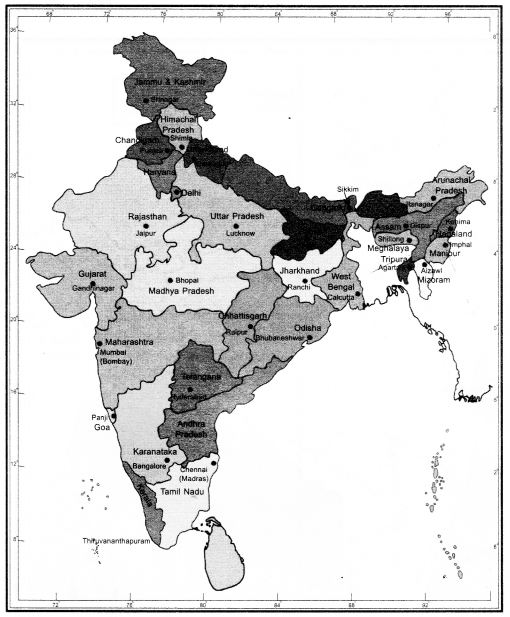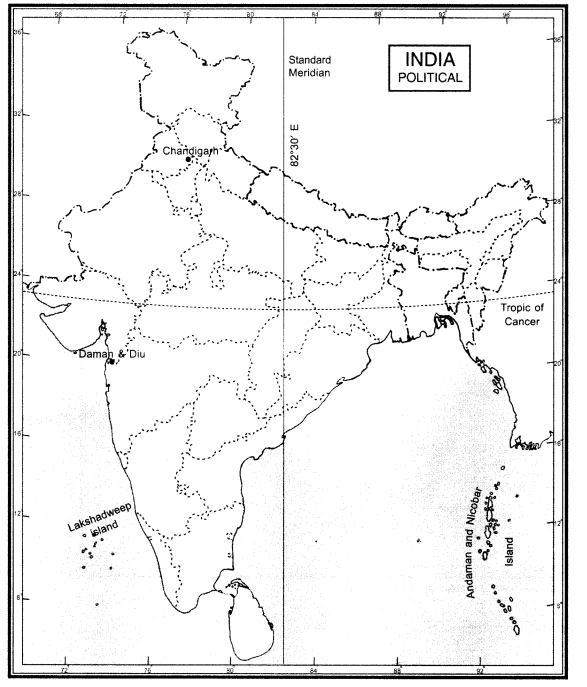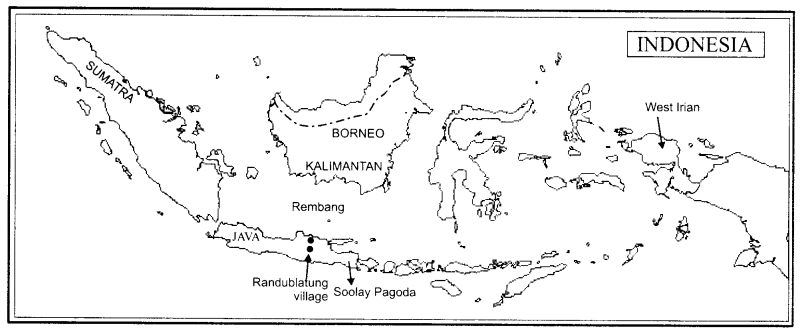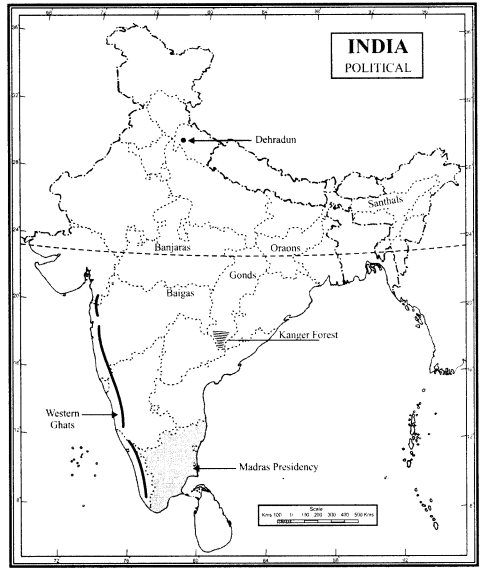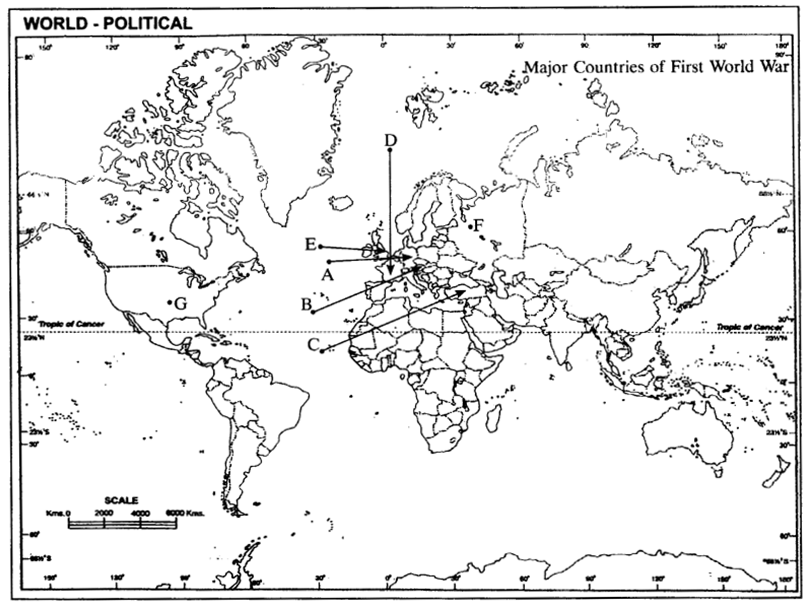CBSE Class 9 History Chapter 5 Extra Questions Pastoralists in the Modern World Pdf free download are part of Extra Questions for Class 9 Social Science. Here we have given NCERT Extra Questions for Class 9 Social Science SST History Chapter 5 Pastoralists in the Modern World.
You can also practice NCERT Solutions for Class 9 History Chapter 5 Questions and Answers on LearnInsta.com.
NCERT Class 9 History Chapter 5 Extra Questions and Answers Pastoralists in the Modern World
Very Short Answer Type Questions
Question 1.
Name the regions of the cyclic movement of Kurumas and Kurubas. [CBSE 2015]
Answer:
The Kurumas and Kurubas lived in Karnataka and Andhra Pradesh. In the dry season they moved near the coast and left when the rains came.
Question 2.
Which Pastoralist nomads live in Karnataka and Andhra Pradesh? [CBSE 2016]
Answer:
The pastoralist nomads who lived in Karnataka and Andhra Pradesh were:
(a) The Gollas.
(b) Kurumas and Kurubas.
Question 3.
Why were the British officials suspicious of the nomadic people? Give one reason. [CBSE 2016]
Answer:
The British officials were suspicious of the nomadic people because they distrusted mobile craftmen and traders who sold their goods in villages, and pastoralists who changed their places or residence every season. They were considered as criminals.
Question 4.
How did the Gaddis earn their livelihood? [CBSE 2016]
Answer:
They sold milk, ghee and other products.
Question 5.
What are bugyals?
Answer:
Bugyals are vast natural pastures on the high mountains, about 12,000 feet. After April the entire mountainside is covered with a variety of grasses, roots and herbs. By monsoon these pastures are covered with thick vegetation and wild flowers.
Question 6.
Who are Gujjar Bakarwals?
Answer:
Gujjar Bakarwals of Jammu and Kashmir are herders of goat and sheep.
Question 7.
What is Bhabhar?
Answer:
It is a dry forested area in the foothills of Garwhal and Kumaun.
Question 8.
Who were Bhotiyas, Sherpas and Kinnauris?
Answer:
They were the pastoral communities of the Himalayas.
Question 9.
Name the most important pastoral community of Maharashtra.
Answer:
Dhangars were an important pastoral community of Maharashtra.
Question 10.
Why were the Dhangars welcomed by the Konkani peasants?
Answer:
After the kharif crops were harvested, the field had to be fertilised for the rabi crops. Dhangar flocks manured the fields and fed on the stubble. Dhangars were also given supplies of rice which they supplied to the plateau where grain was scarce.
Question 11.
Why did the Dhangars leave the Konkan and coastal areas before the onset of monsoon?
Answer:
The Dhangars left the Konkan and the coastal areas before the onset of monsoon because the sheep could not tolerate the wet monsoon conditions.
Question 12.
What are ‘Kharif and ‘rabi crops’?
Answer:
Kharif is the autumn crop, usually harvested between September and October. Rabi, the spring crop, usually harvested after March.
Question 13.
What is a Gujjar Mandap?
Answer:
A Gujjar Mandap is a place where the Gujjar cattle herders live. It is made of ringal and grass. A mandap was also a workplace, where the Gujjar made ghee for the purpose of sale.
Question 14.
Name the cattle, goat and sheep herders found in Karnataka and Andhra Pradesh.
Answer:
The Gollas herded cattle, the Kurumas and Kurubas reared sheep and goat and sold woven blankets.
Question 15.
What defined the seasonal rhythms of the movement of the pastoralists in Karnataka and Andhra Pradesh?
Answer:
It was the alternation of the monsoon and dry season which defined the seasonal rhythms of the movement of pastoralists in Karnataka and Andhra Pradesh. In dry season they moved to the coastal areas and left when the rains came.
Question 16.
Who are the Banjaras? Where are they found?
Answer:
Banjaras are a well known group of graziers. They are found in the villages of Uttar Pradesh, Punjab, Rajasthan, Maharashtra and Madhya Pradesh.
Question 17.
How did the Banjaras earn their living?
Answer:
By selling plough cattle and other goods to villagers in exchange for grain and fodder.
Question 18.
Where did the Raikas live? What is their occupation?
Answer:
Raikas lived in the deserts of Rajasthan. Harvest fluctuated every year and no crop could be grown over large areas. So the Raikas combined cultivation with pastoralism.
Question 19.
Who are Maru Raikas? What is their settlement called?
Answer:
The camel herders in the Thar desert near Jaisalmer in Rajasthan are called Maru (desert) Raikas, and their settlement is called a Dhandi.
Question 20.
Name two places in Rajasthan where camel fair are held.
Answer:
The camel fairs are held at Balotra and Pushkar.
Question 21.
What kind of forests were declared as ‘Reserved’ Forests?
Answer:
The forests that produced commercially valuable timber like sal and deodar were declared as Reserved Forests.
Question 22.
Where do the Maasai cattle herders live?
Answer:
The Massai cattle herders live primarily in East Africa.
Question 23.
What was the extent of area of Maasailand before colonial times?
Answer:
Before colonial period, Maasiland extended over a vast area from north Kenya to the steppes of north Tanzania.
Question 24.
What happend to Maasailand in 1885?
Answer:
In 1885, the colonial powers scrambled for territorial possesions. Maasailand was cut into half with an international boundary between British Kenya and German Tanganyika. The Maasai lost 60 per cent of their pre-colonial land.
Question 25.
What does the title ‘Maasai’ mean? What did they depend on for subsistence?
Answer:
The title ‘Maasai’ is derived from the word ‘maa’. Maa-sai means ‘My People’. Maasai are nomadic and pastoral people who depend on milk and meat for subsistence.
Question 26.
State one measure introduced by the British to administer the affairs of the Maasai.
Answer:
(a) They appointed chiefs of different sub-groups of Maasai, who were made responsible for the affairs of the tribe.
(b) The British imposed various restrictions on raiding and warfare. (Any one)
Question 27.
What is meant by kafila?
Answer:
In winter, when the high mountains were covered with snow, the pastoralists lived with their herds in the low hills of the Siwalik range. The dry scrub forests here provided pasture for their herds. By the end of April they began their northern march for their summer grazing grounds. Several households came together for this journey, forming what is known as a kafila.
Question 28.
According to environmentalists and economists why are nomadic pastoralists the important communities?
Answer:
Nomadic pastoralists are important communities because because they play a major role in the conservation of forests. People get useful products like milk, ghee, wool from herders.
Short Answer Type Questions
Question 29.
Explain any three factors that the pastoral groups have to consider to sustain their life. [CBSE 2010, 2015, 2016]
Answer:
The three factors which the pastoral groups have to consider to sustain their life are:
(a) They have to judge how long the herds could stay at one place and know where they could find water and pastures.
(b) They had to calculate the timing of their movement and had to move through different territories.
(c) They had to set up relationship with the farmers, on the way, so that herds could graze in the harvested fields and manure the soil. They combined number of activities like cultivation, herding, and trade to sustain themselves.
Question 30.
Explain any three different livelihood practices adopted by the pastoralists in the 20th century, as they left their traditional occupations. [CBSE 2016]
Answer:
Three livelihood practices adopted by the pastoralists in the 20th century were as follows:
(a) Richer pastoralists started buying land and settling down, giving up their nomadic life.
(b) Some became settled peasants cultivating land.
(c) Others took to trnding.
Question 31.
Give one example to explain why the pastoralists have been compelled to change their movement in modern times. [CBSE 2016]
Answer:
The pastoralists have been compelled to change their movement in modern times.
After 1947, the camel and sheep herding Raikas could no longer move into Sindh and graze their animals on the banks of Indus. The new political boundaries between Indian & Pakistan stopped their movement. In recent years, they have been migrating to Haryana where sheep could graze on agricultural land, after harvests are cut.
Question 32.
Who are Gujjar Bakarwals of Jammu and Kashmir? Name their winter and summer grounds. Why did they go to these places?
Or
Describe the lifestyle of the Gujjar Bakarwals of Jammu and Kashmir. [CBSE 2010]
Answer:
Gujjar Bakarwals of Jammu and Kashmir are herders of goat and sheep. They move between their winter and summer grounds. In winters when the ground is covered with snow, they live with their herds in the Siwalik range. The herds feed on the dry scrub forests, By April, they start moving to their summer grazing grounds. After crossing the Pir Panjal passes they reach the Kashmir valley. With the onset of summer, the snow has melted, and the valley is covered with variety of flowers and grasses. They provide nutritious forage for the animals. By the end of September they come back to their winter homes in the Siwalik.
Question 33.
Write about the life style of the Gujjars of Kangra.
Answer:
The Gujjar cattle herders live in Garhwal and Kumaon. In the winter, they come to the dry forest of the Bhabhar and go up to the high meadows-the bugyals-in summer. Gujjars are exclusively a pastoralist tribe in the hills, where they do not cultivate anything. Buffaloes are the main wealth of the Gujjars. They live near the boundary of the forests and the mainstay of their existence is the sale of milk, ghee and other products. The men graze the cattle. The women go -to the markets every morning, with little earthen pots filled with milk, butter milk and ghee. During the hot weather they move their herds to the upper ranges where the buffaloes enjoy the weather.
Question 34.
Who were Dhangars? What were their occupations? Why were they continuously on the move? [CBSE 2010]
Answer:
The Dhangars were an important pastoral community of Maharashtra. Most of them were shepherds, some were blanket weavers and others were buffalo herders. They were continously on the move in search of pasture for their cattle.
Question 35.
Discuss the various restrictions imposed on pastoral groups in Africa. [CBSE 2010]
Or
What restrictions were imposed by the colonial government on the African pastoralists?
Answer:
(a) The various pastoral groups were forced to live in special reserves. They were not allowed to move their stock without special permits which were not easy to get. Those who defied the rules were severely punished.
(b) Pastoralists were not allowed to enter the markets area of the whites.
(c) In many regions, they were prohibited from participating in any trading activity.
Thus, the restrictions imposed on the pastoralists adversely affected their pastoral and trading activities.
Question 36.
What are some of the problems that pastoralists face in the modern world ? How have these groups adapted to the new times? [CBSE 2010]
Answer:
Some of the problems that pastoralists face in the modern world are as follows.
(a) New laws and new borders have affected the patterns of the pastoralists movement.
(b) Now, they find it difficult to move in search of pastures. As pasture lands have shrunk, grazing has become a problem.
(c) Remaining pastures deteriorate due to continuous over grazing.
(id) Cattle die in large numbers during drought. This become the time of crises. (any three)
They have adapted to new times by changing the paths of their annual movement and reducing their cattle numbers. They have also demanded rights in management of forests and water resources. Some became settled peasants cultivating land, some took to trading, while others became labourers.
Question 37.
What are the similarities in the way in which the modern world forced changes in the lives of pastoral communities in India and East Africa?
Answer:
(a) In both countries Pastoralists reduced the number of cattle in their herds since there were not enough pasture fields to feed large numbers.
(b) New pastures were found when movement to old grazing grounds become difficult.
(c) Many combined pastoral activity with other forms of income and thus adapted to changes in the modern world.
Question 38.
Why were the chiefs appointed by the British not affected by war or drought in Maasai land?
Answer:
The chiefs appointed by the colonial government often accumulated wealth over time. They had a
regular income with which they could buy animals, goods and land.
They lent money to poor neighbours who needed cash to pay taxes. Many of them began living in towns, and became involved in trade. Their wives and children stayed back in the villages to look after the animals.
These chiefs managed to survive the devastations of war and drought. They had both pastoral and non-pastoral income, and could buy animals when their stock was depleted.
Long Answer Type Questions
Question 39.
Who are pastoral nomads? Describe any four features of them? [CBSE 2015, 2016]
Answer:
Pastoral nomads are people who do not live at one place but move from one area to another to earn their living. They depend on livestock rearing, they move with their cattle and other animals. The four features of pastoral nomads are as follows.
(a) Pastoral nomads had to adjust to seasonal changes and make best use of available pastures in different places. When the pastureland was exhausted they moved to a different place where pastures are available.
(b) Cold and snow are not the only factors which defined their seasonal movement. In dry season they moved to coastal areas and left when the rain came.
(c) They set up a relationship with farmers, so that the herds could graze in harvested fields and manure the soil.
(id) They combine a range of different occupations – cultivation, trade and herding to earn their living. For example, the Gollas, Kurumas and Kurubas herded cattle, cultivated small patches of land and also engaged in a variety of petty trades.
Question 40.
In which two social categories was the Maasai society divided in pre-colonial times? In what way
did their roles change because of the colonial policies? [CBSE 2016]
Or
Describe the social organisations of the Massai’s in the pre-colonial times. What changes occured in Maasai’s society during the colonial rule? [CBSE 2010]
Answer:
The Massai society was divided into two social groups in pre-colonial times – elders and warriors. The elders were the ruling group and met in periodic councils to decide on the affairs of the community and settle disputes. The warriors consisted of young people, responsible for the protection of the tribe. They defended the community and organised cattle raids. Raiding was an important activity in a society where cattle was wealth. It was the way through which different pastoral groups asserted their superiority.
The British introduced a number of measures which changed the lives of the Maasai. The chiefs of different sub-groups were appointed to look after the affairs of the tribe. Restrictions were imposed on raiding and warfare. So, the traditional authority of both the elders and warriors changed dramatically. The difference based on age, between elders and warriors broke down, and a new distinction was developed between the rich and poor pastoralists.
The chiefs appointed by the colonial government became rich overtime. They had regular income with which they purchased land, goods, animals and also get involved in trade. But the poor pastoralists worked as charcoal, burners or work in road or building construction or did odd jobs.
Question 41.
Which parts of the African continent are inhabited by the pastoralists? What are the different types of activities they are involved in? [CBSE 2016]
Answer:
Most of the pastoralists in Africa lived in semi-arid grasslands or arid deserts where rain-fed agriculture is difficult.
The pastoralists are involved in different type of activities like they rear cattle, camels, goats, sheep and donkeys; and sell milk, meat, animal skin and wool. Some also earn through trade and transport, others combine pastoral activity with agriculture, still others do a variety of odd jobs to supplement their meagre and uncertain earnings from pastoralism.
Question 42.
How did the pastoralists cope with the changes in new times?
Answer:
Pastoralists managed to cope with the changes in many ways.
(a) Some pastoralists reduced the number of cattle because there were not enough pastures to feed large numbers. When pastureland in one place was closed to them, they changed the direction of their movement and combined pastoral activity with other forms of trade.
(b) Some pastoralists found new pastures.
(c) They exert political pressure on the government for relief, subsidy and other forms of support and demand a right in the management of forests and water resources.
(d) Some rich pastoralists gave up their nomadic habits, purchased land and started leading a settled life.
(e) Some became settled peasants cultivating land. Some borrowed money from the moneylenders to survive.
Question 43.
Why were wasteland rules enacted in various parts of the country?
Answer:
The colonial government wanted to convert all grazing land into cultivated land. Land revenue was one of the main sources of its finance. By cultivation, it could yield more revenue and at same time produce more cotton, jute, wheat and other agriculture products that were required in England. To colonial official all uncultivated land was unproductive. It was seen as wasteland and had to be brought under cultivation. According to them forest which is used for grazing cannot be used for any other purpose and is unable to yield timber and fuel, which are the main legitimate forest produce. In 19th century wasteland rules were enacted in many parts of the country.
Question 44.
Trace the movements of pastorals of India in the mountains.
Answer:
Ans. The Gujjar Bakarwals of Jammu and Kashmir are great herders of goat and sheep. Many of them migrated to this region in the nineteenth century in search of pastures for their animals.
In winter, when the high mountains were covered with snow, they lived with their herds in the low hills of the Siwalik range. The dry scrub forests here provided pasture for their herds. By the end of April they began their northern march for their summer grazing grounds. Several households came together for this journey, forming what is known as a kafila.
With the onset of summer, the snow melted and the mountainsides were lush green. The variety of grasses that sprouted provided rich nutritious forage for the animal herds. By end September the Bakarwals were on the move again, this time on their downward journey, back to their winter base.
The Gaddi shepherds of Himachal Pradesh had a similar cycle of seasonal movement. By April they moved north and spent the summer in Lahul and Spiti. By September they began their return movement. On the way they stopped once again in the villages of Lahul and Spiti, reaping their summer harvest and sowing their winter crop.
Then they descended with their flock to their winter grazing ground on the Siwalik hills. Next April, once again, they began their march with their goats and sheep, to the summer meadows.
In Garhwal and Kumaon, the Gujjar cattle herders came down to the dry forests of the bhabar in the winter, and went up to the high meadows – the bugyals – in summer. This pattern of cyclical movement is common to Bhotiyas, Sherpas and Kinnauris.
Question 45.
Trace the movement of pastoral nomads of India on the plateaus. [HOTS]
Answer:
(a) Dhangars were an important pastoral community of Maharashtra. Most of them were shepherds,
some were blanket weavers, and still others were buffalo herders. The Dhangar shepherds stayed in the central plateau of Maharashtra during the monsoon.
(b) Nothing but dry crops like bajra could be sown here. In the monsoon this tract became a vast grazing ground for the Dhangar flocks. By October they move to Konkan. This was a flourishing agricultural tract with high rainfall and rich soil. Here the shepherds were welcomed by Konkani peasants.
(c) After the kharif harvest was cut at this time, the fields had to be fertilized and made ready for the rabi harvest. Dhangar flocks manured the fields and fed on the stubble. The Konkani peasants also gave supplies of rice which the shepherds took back to the plateau where grain was scarce. With the onset of the monsoon the Dhangars left the Konkan and.the coastal areas with their flocks and returned to their settlements on the dry plateau. The sheep could not tolerate the wet monsoon conditions.
(d) In Karnataka and Andhra Pradesh the Gollas herded cattle. The Kurumas and Kurubas reared sheep and goats and sold woven blankets.
(e) Unlike the mountain pastoralists, it was not the cold and the snow that defined the seasonal rhythms of their movement: rather it was the alternation of the monsoon and dry season that determined their movement.
(f) In the dry season they moved to the coastal tracts, and left when the rains came. Only buffaloes liked the swampy, wet conditions of the coastal areas during the monsoon months. Other herds had to be shifted to the dry plateau at this time. (any five)
Map Skills
Question 46.
Locate and label the places where the following nomadic tribes are found on the given outline map of India.
Nomadic Tribes
- Gujjar Bakarwal
- Gaddi shepherds
- Gujjars
- Bhotiyas
- Kinnauris
- Dhangars
- Gollas
- Kurumas
- Kurubas
- Banjaras
- Raikas
- Maldhari herders
Answer:
Nomadic Tribes Location
Gujjar Bakarwal – Jammu and Kashmir
Gaddi shepherds – Himachal Pradesh
Gujjars – Garhwal and Kumaon
Bhotiyas – Uttar Pradesh
Kinnauris – Himachal Pradesh
Dhangars – Maharashtra
Gollas – Karnataka and Andhra Pradesh
Kurumas – Karnataka and Andhra Pradesh
Kurubas – Karnataka and Andhra Pradesh
Banjaras – Uttar Pradesh, Punjab, Rajasthan, Madhya Pradesh, Maharashtra
Raikas – Rajasthan
Maldhari herders – Rann of Kachchh (Gujarat)
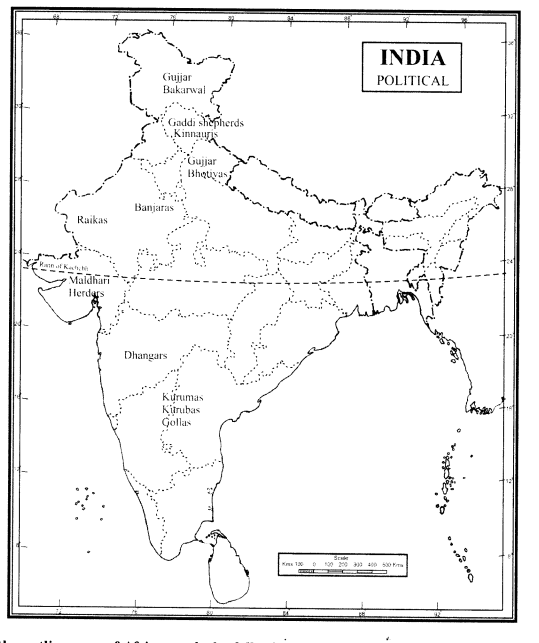
Question 47.
On the outline map of Africa mark the following points.
Nomadic and Pastoral Tribes
Bedouin, Berbers, Maasai – South Kenya and Tanzania, Somali, Boran, Turkana, Kaokoland herders in South-West Africa present Namibia, Kabbabish, Tuarag
Game Reserves
Maasai Maru – Kenya, Samburu – Kenya, Amboseli – Kenya, Serengeti – Tanzania
Answer:
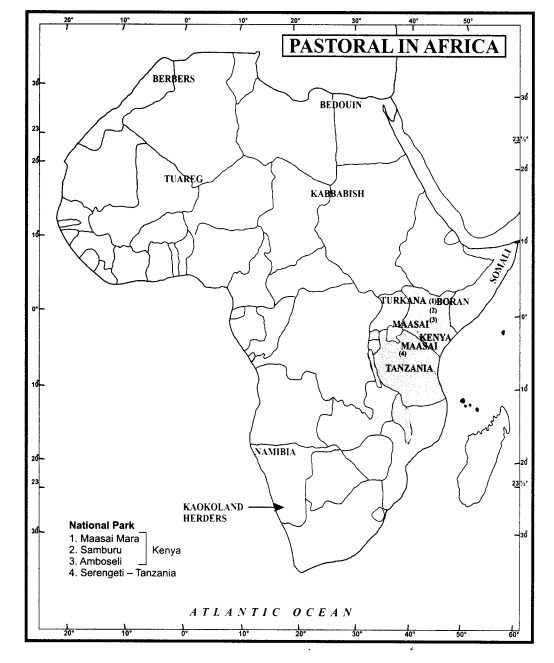
We hope the given CBSE Class 9 History Chapter 5 Extra Questions Pastoralists in the Modern World Pdf free download will help you. If you have any query regarding NCERT Extra Questions for Class 9 Social Science SST History Chapter 5 Pastoralists in the Modern World, drop a comment below and we will get back to you at the earliest.
